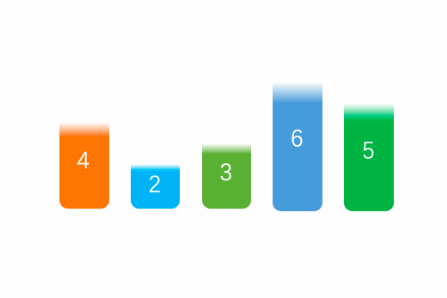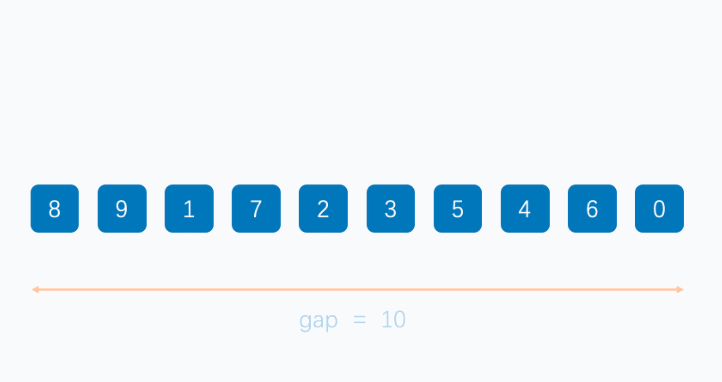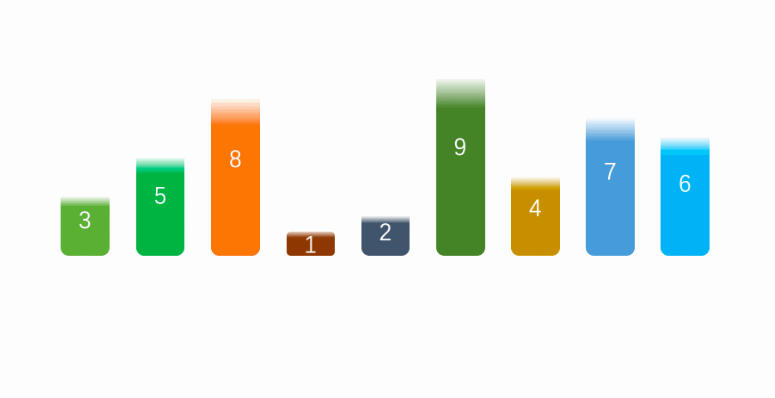Is java an algorithm?

java is not an algorithm.
Java is an object-oriented programming language and a widely used computer programming language. It has the characteristics of cross-platform, object-oriented, and generic programming and is widely used in Enterprise-level web application development and mobile application development.
Algorithm refers to an accurate and complete description of a problem-solving solution. It is a series of clear instructions for solving problems. Algorithm represents a systematic method to describe the strategic mechanism for solving problems. In other words, it is possible to obtain the required output within a limited time for certain standardized inputs. If an algorithm is flawed or inappropriate for a problem, executing the algorithm will not solve the problem. Different algorithms may use different time, space, or efficiency to complete the same task. The quality of an algorithm can be measured by its space complexity and time complexity.
We can use java language to implement different algorithms.Several common sorting algorithms in Java
1. Bubble sort
public static void main(String[] args) {
int arr[] = {8, 5, 3, 2, 4};
//冒泡
for (int i = 0; i < arr.length; i++) {
//外层循环,遍历次数
for (int j = 0; j < arr.length - i - 1; j++) {
//内层循环,升序(如果前一个值比后一个值大,则交换)
//内层循环一次,获取一个最大值
if (arr[j] > arr[j + 1]) {
int temp = arr[j + 1];
arr[j + 1] = arr[j];
arr[j] = temp;
}
}
}
}5,3, 2,4,2. Select sorting8
3,2,4,5,8
2,3,4,5,8
2,3,4,5,8
2,3,4,5,8

public static void main(String[] args) {
int arr[] = {6, 5, 3, 2, 4};
//选择
for (int i = 0; i < arr.length; i++) {
//默认第一个是最小的。
int min = arr[i];
//记录最小的下标
int index = i;
//通过与后面的数据进行比较得出,最小值和下标
for (int j = i + 1; j < arr.length; j++) {
if (min > arr[j]) {
min = arr[j];
index = j;
}
}
//然后将最小值与本次循环的,开始值交换
int temp = arr[i];
arr[i] = min;
arr[index] = temp;
//说明:将i前面的数据看成一个排好的队列,i后面的看成一个无序队列。每次只需要找无需的最小值,做替换
}
}3. Insertion sort2,5,3,6 ,4
2,3,5,6,4
2,3,4,6,5
2,3,4,5,6
2,3,4,5,6

public static void main(String[] args) {
int arr[] = {7, 5, 3, 2, 4};
//插入排序
for (int i = 1; i < arr.length; i++) {
//外层循环,从第二个开始比较
for (int j = i; j > 0; j--) {
//内存循环,与前面排好序的数据比较,如果后面的数据小于前面的则交换
if (arr[j] < arr[j - 1]) {
int temp = arr[j - 1];
arr[j - 1] = arr[j];
arr[j] = temp;
} else {
//如果不小于,说明插入完毕,退出内层循环
break;
}
}
}
}4. Hill sorting (insertion sort variant)5,7 ,3,2,4
3,5,7,2,4
2,3,5,7,4
2,3,4,5,7

public static void main(String[] args) {
int arr[] = {7, 5, 3, 2, 4};
//希尔排序(插入排序变种版)
for (int i = arr.length / 2; i > 0; i /= 2) {
//i层循环控制步长
for (int j = i; j < arr.length; j++) {
//j控制无序端的起始位置
for (int k = j; k > 0 && k - i >= 0; k -= i) {
if (arr[k] < arr[k - i]) {
int temp = arr[k - i];
arr[k - i] = arr[k];
arr[k] = temp;
} else {
break;
}
}
}
//j,k为插入排序,不过步长为i
}
}4,1,3,2,6,5 ,8,9,73,1,4,2,6,5,7,9,81,2,3,4,5,6,7,8 ,95. Quick sort

d、当低指针移动到大于中间值的时候,赋值到高指针空缺的地方。然后先高指针向左移动,并且切换高指针移动。重复c、d操作。
e、直到高指针和低指针相等时退出,并且将中间值赋值给对应指针位置。
f、然后将中间值的左右两边看成行的列表,进行快速排序操作。
g、代码实现
public static void main(String[] args) {
int arr[] = {7, 5, 3, 2, 4, 1, 8, 9, 6};
//快速排序
int low = 0;
int high = arr.length - 1;
quickSort(arr, low, high);
}
public static void quickSort(int[] arr, int low, int high) {
//如果指针在同一位置(只有一个数据时),退出
if (high - low < 1) {
return;
}
//标记,从高指针开始,还是低指针(默认高指针)
boolean flag = true;
//记录指针的其实位置
int start = low;
int end = high;
//默认中间值为低指针的第一个值
int midValue = arr[low];
while (true) {
//高指针移动
if (flag) {
//如果列表右方的数据大于中间值,则向左移动
if (arr[high] > midValue) {
high--;
} else if (arr[high] < midValue) {
//如果小于,则覆盖最开始的低指针值,并且移动低指针,标志位改成从低指针开始移动
arr[low] = arr[high];
low++;
flag = false;
}
} else {
//如果低指针数据小于中间值,则低指针向右移动
if (arr[low] < midValue) {
low++;
} else if (arr[low] > midValue) {
//如果低指针的值大于中间值,则覆盖高指针停留时的数据,并向左移动高指针。切换为高指针移动
arr[high] = arr[low];
high--;
flag = true;
}
}
//当两个指针的位置相同时,则找到了中间值的位置,并退出循环
if (low == high) {
arr[low] = midValue;
break;
}
}
//然后出现有,中间值左边的小于中间值。右边的大于中间值。
//然后在对左右两边的列表在进行快速排序
quickSort(arr, start, low -1);
quickSort(arr, low + 1, end);
}h、排序过程
6,5,3,2,4,1,7,9,8
1,5,3,2,4,6,7,9,8
1,5,3,2,4,6,7,9,8
1,4,3,2,5,6,7,9,8
1,2,3,4,5,6,7,9,8
1,2,3,4,5,6,7,9,8
1,2,3,4,5,6,7,8,9
6、归并排序
a、将列表按照对等的方式进行拆分
b、拆分小最小快的时候,在将最小块按照原来的拆分,进行合并
c、合并的时候,通过左右两块的左边开始比较大小。小的数据放入新的块中
d、说明:简单一点就是先对半拆成最小单位,然后将两半数据合并成一个有序的列表。
e、代码实现
public static void main(String[] args) {
int arr[] = {7, 5, 3, 2, 4, 1,6};
//归并排序
int start = 0;
int end = arr.length - 1;
mergeSort(arr, start, end);
}
public static void mergeSort(int[] arr, int start, int end) {
//判断拆分的不为最小单位
if (end - start > 0) {
//再一次拆分,知道拆成一个一个的数据
mergeSort(arr, start, (start + end) / 2);
mergeSort(arr, (start + end) / 2 + 1, end);
//记录开始/结束位置
int left = start;
int right = (start + end) / 2 + 1;
//记录每个小单位的排序结果
int index = 0;
int[] result = new int[end - start + 1];
//如果查分后的两块数据,都还存在
while (left <= (start + end) / 2 && right <= end) {
//比较两块数据的大小,然后赋值,并且移动下标
if (arr[left] <= arr[right]) {
result[index] = arr[left];
left++;
} else {
result[index] = arr[right];
right++;
}
//移动单位记录的下标
index++;
}
//当某一块数据不存在了时
while (left <= (start + end) / 2 || right <= end) {
//直接赋值到记录下标
if (left <= (start + end) / 2) {
result[index] = arr[left];
left++;
} else {
result[index] = arr[right];
right++;
}
index++;
}
//最后将新的数据赋值给原来的列表,并且是对应分块后的下标。
for (int i = start; i <= end; i++) {
arr[i] = result[i - start];
}
}
}f、排序过程
5,7,3,2,4,1,6
5,7,2,3,4,1,6
2,3,5,7,4,1,6
2,3,5,7,1,4,6
2,3,5,7,1,4,6
1,2,3,4,5,6,7
推荐教程:Java教程
The above is the detailed content of Is java an algorithm?. For more information, please follow other related articles on the PHP Chinese website!

Hot AI Tools

Undresser.AI Undress
AI-powered app for creating realistic nude photos

AI Clothes Remover
Online AI tool for removing clothes from photos.

Undress AI Tool
Undress images for free

Clothoff.io
AI clothes remover

AI Hentai Generator
Generate AI Hentai for free.

Hot Article

Hot Tools

Notepad++7.3.1
Easy-to-use and free code editor

SublimeText3 Chinese version
Chinese version, very easy to use

Zend Studio 13.0.1
Powerful PHP integrated development environment

Dreamweaver CS6
Visual web development tools

SublimeText3 Mac version
God-level code editing software (SublimeText3)

Hot Topics
 1378
1378
 52
52
 Perfect Number in Java
Aug 30, 2024 pm 04:28 PM
Perfect Number in Java
Aug 30, 2024 pm 04:28 PM
Guide to Perfect Number in Java. Here we discuss the Definition, How to check Perfect number in Java?, examples with code implementation.
 Weka in Java
Aug 30, 2024 pm 04:28 PM
Weka in Java
Aug 30, 2024 pm 04:28 PM
Guide to Weka in Java. Here we discuss the Introduction, how to use weka java, the type of platform, and advantages with examples.
 Smith Number in Java
Aug 30, 2024 pm 04:28 PM
Smith Number in Java
Aug 30, 2024 pm 04:28 PM
Guide to Smith Number in Java. Here we discuss the Definition, How to check smith number in Java? example with code implementation.
 Java Spring Interview Questions
Aug 30, 2024 pm 04:29 PM
Java Spring Interview Questions
Aug 30, 2024 pm 04:29 PM
In this article, we have kept the most asked Java Spring Interview Questions with their detailed answers. So that you can crack the interview.
 Break or return from Java 8 stream forEach?
Feb 07, 2025 pm 12:09 PM
Break or return from Java 8 stream forEach?
Feb 07, 2025 pm 12:09 PM
Java 8 introduces the Stream API, providing a powerful and expressive way to process data collections. However, a common question when using Stream is: How to break or return from a forEach operation? Traditional loops allow for early interruption or return, but Stream's forEach method does not directly support this method. This article will explain the reasons and explore alternative methods for implementing premature termination in Stream processing systems. Further reading: Java Stream API improvements Understand Stream forEach The forEach method is a terminal operation that performs one operation on each element in the Stream. Its design intention is
 TimeStamp to Date in Java
Aug 30, 2024 pm 04:28 PM
TimeStamp to Date in Java
Aug 30, 2024 pm 04:28 PM
Guide to TimeStamp to Date in Java. Here we also discuss the introduction and how to convert timestamp to date in java along with examples.
 Java Program to Find the Volume of Capsule
Feb 07, 2025 am 11:37 AM
Java Program to Find the Volume of Capsule
Feb 07, 2025 am 11:37 AM
Capsules are three-dimensional geometric figures, composed of a cylinder and a hemisphere at both ends. The volume of the capsule can be calculated by adding the volume of the cylinder and the volume of the hemisphere at both ends. This tutorial will discuss how to calculate the volume of a given capsule in Java using different methods. Capsule volume formula The formula for capsule volume is as follows: Capsule volume = Cylindrical volume Volume Two hemisphere volume in, r: The radius of the hemisphere. h: The height of the cylinder (excluding the hemisphere). Example 1 enter Radius = 5 units Height = 10 units Output Volume = 1570.8 cubic units explain Calculate volume using formula: Volume = π × r2 × h (4
 How to Run Your First Spring Boot Application in Spring Tool Suite?
Feb 07, 2025 pm 12:11 PM
How to Run Your First Spring Boot Application in Spring Tool Suite?
Feb 07, 2025 pm 12:11 PM
Spring Boot simplifies the creation of robust, scalable, and production-ready Java applications, revolutionizing Java development. Its "convention over configuration" approach, inherent to the Spring ecosystem, minimizes manual setup, allo





